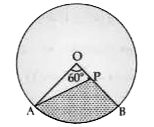If 2,(x-1),4 are in Arithmetic Progression. Find the value of x.Solution in Kannada
The correct Answer is:4
Step by step video, text & image solution for If 2,(x-1),4 are in Arithmetic Progression. Find the value of x. by Maths experts to help you in doubts & scoring excellent marks in Class 10 exams.
Topper's Solved these Questions
- BOOK - OSWAAL PUBLICATIONCHAPTER - ARITHMETIC PROGRESSIONSEXERCISE - LONG ANSWER TYPE QUESTION-I11videos
ARITHMETIC PROGRESSIONS
- BOOK - OSWAAL PUBLICATIONCHAPTER - ARITHMETIC PROGRESSIONSEXERCISE - LONG ANSWER TYPE QUESTIONS-II13videos
ARITHMETIC PROGRESSIONS
- BOOK - OSWAAL PUBLICATIONCHAPTER - ARITHMETIC PROGRESSIONSEXERCISE - VERY SHORT ANSWER TYPE QUESTION8videos
ARITHMETIC PROGRESSIONS
- BOOK - OSWAAL PUBLICATIONCHAPTER - AREAS RELATED TO CIRCLES EXERCISE - LONG ANSWER TYPE QUESTIONS - I20videos
AREAS RELATED TO CIRCLES
- BOOK - OSWAAL PUBLICATIONCHAPTER - CIRCLES EXERCISE - TEXTBOOK CORNER (EXERCISE 4.2)13videos
CIRCLES
Similar Questions
Find the sum of all natural numbers between 200 and 300 which are divisible by 6.
03:30View SolutionThe sum of four consecutive terms which are in an arithmetic progression is 32 and the ratio of the product of the first and the last term to the product to two middle terms is 7:15. Find the number.
03:52View SolutionWhat is the common difference between the consecutive terms of an A.P.
01:50View SolutionIn the given figure, AOB is a sector of angle 60∘ of a circle with centre O and radius 17 cm . If AP ⊥ OB and AP = 15 cm find the area of the shaded region.
 01:14View Solution
01:14View SolutionFrom a point Q ,the length of the tangent to a circle is 24 cm and the distacne to Q from the centre is 24.5 cm.The radius of the circle is
(a) 4.92 cm
(b)12 cm
©15 cm
(d)24.5 cm
01:17View SolutionIf log_(l)x,log_(m)x,log_(n)x are in arithmetic progression and x!=1, then n^(2) is :
06:29View SolutionFind the condition that the zeroes of the polynomial f(x)=x^(3)-px^(2)+qx-r may be in arithmetic progression.
03:39View SolutionFind t5andt6 of the arithmetic progression 0,14,12,34,…..
03:04View SolutionFind the 15th term of the arithmetic progression 10, 4, -2, ….
07:31View SolutionThe nth term of an arithmetic progression is 3n-1. Find the progression.
03:44View SolutionIf the coefficients of x9,x10,x11 in the expansion of (1+x)n are in arithmetic progression then n2=41n=
04:58View SolutionIf the reciprocals of 2, log(3x−4)4andlog3x+724 are in arithmetic progression, then x is equal to
02:35View SolutionIn an Arithmetic Progression, T10=175andT20=475. Find the Arithmetic Progression.
05:17View SolutionFind the condition that the zeroes of the polynomial f(x)=x3–px2+qx−r may be in arithmetic progression.
03:32View SolutionFind out which of the following sequences are arithmetic progressions. For those which are arithmetic progressions, find out the common difference. :- a + b, (a + 1) + b, (a + 1) + (b + 1), (a + 2) + (b + 1), (a + 2) + (b + 2)…….
04:28View Solution

